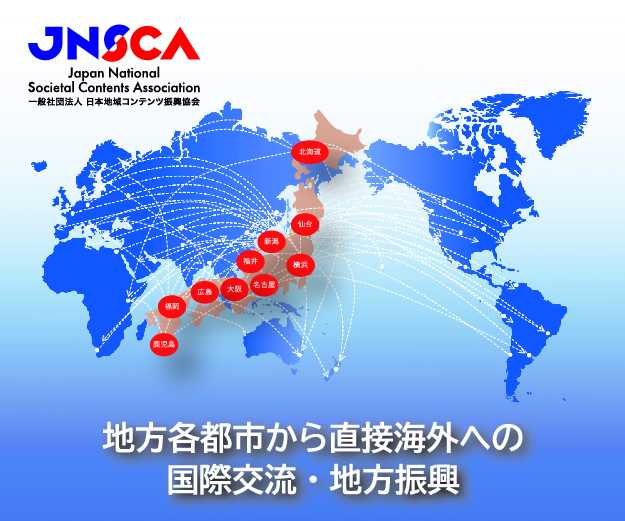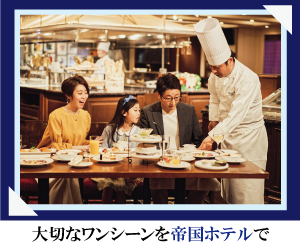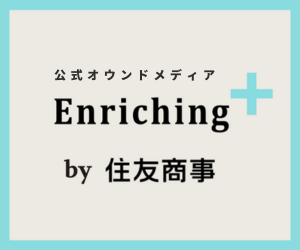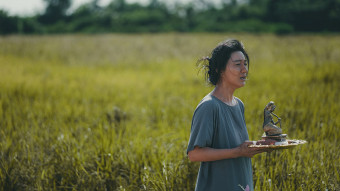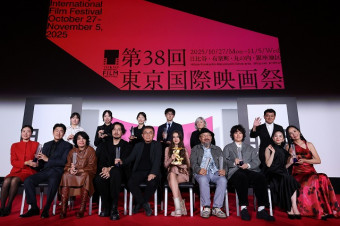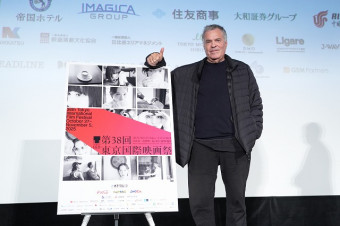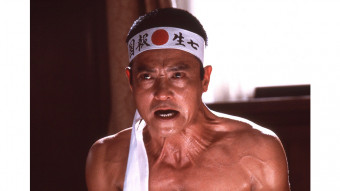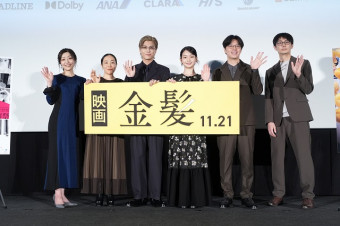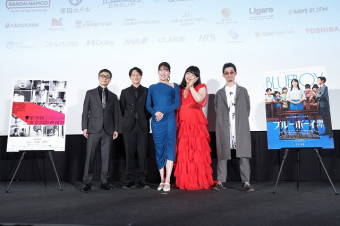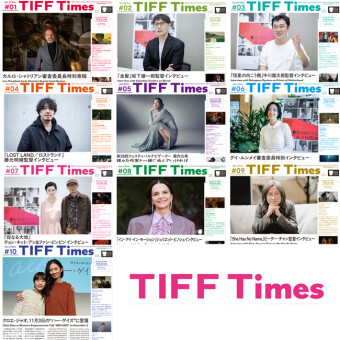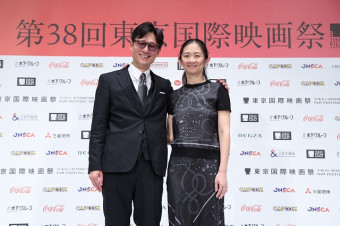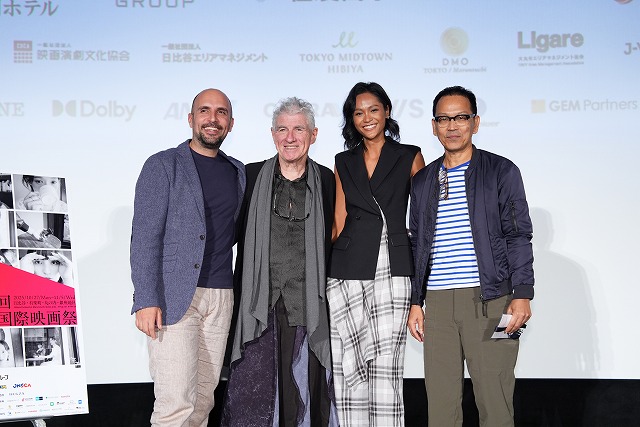
Late on October 28, the second night of the 38th Tokyo International Film Festival, acclaimed director Pen-ek Ratanaruang, actor Bella Boonsang, legendary cinematographer Christopher Doyle and producer Stefano Centini mounted the stage to prolonged applause from a full house. They appeared to (ostensibly) answer questions following the Asian premiere of Morte Cucina in TIFF’s main Competition.
However, as fans of the Thai director and Australian cinematographer well know, there is always room for a little fun. It all began innocently enough, with Ratanaruang saying, “I want to thank TIFF for inviting us. My film Headshot was screened here many years ago, so it’s good to be back.”
But Doyle couldn’t resist. Turning to the audience, he said, “The question is: Is anyone hungry?!”
He had good reason to ask, considering that Morte Cucina is a film about food — as well as other things — and there are a great number of scenes featuring the preparation, array, and eating of scrumptious-looking dishes.
On a more serious note, Doyle said, “This is our fourth film together, so for those who care about film, as I imagine many of you here do; it’s all about family, all about caring, not about the colors and décor. If you’re not making films with people who matter to you — it’s all about making films with people who are committed to each other, who trust each other — it’s all about that. Imagine if Bella hadn’t trusted us. She did, and that’s why she could do what she does in the film.”
Then he shifted gears, as he is famed for doing. Leaning forward, he quipped, “Thank you, Pen-ek, for letting me fart on set. I farted quite a lot. I tried to convince him that it was a way of exchanging ki, but it didn’t work.” (He was disappointed when the interpreter translated this all without flinching.)
In mentioning Boonsang’s level of trust, Doyle was perhaps referencing the film’s unexpected climax scene; but before that arrives, her character, Sao, spends a lot of time in the kitchen, whipping up amazing meals for her pampered husband, Korn. While it’s never exactly clear what he may have done to her in the past, viewers are invited to make a connection between Sao and a younger woman, who had been raped by Korn after being exiled from her traditional Muslim community for something similar.
Korn invests in a swanky Bangkok restaurant that Sao runs with great success, but she continues to cook for him, until his friend, a doctor, realizes that the food is causing him grave physical distress. With this, Sao and Korn disappear. By the time the doctor locates them in faraway Chiang Mai, Sao is running another successful restaurant, but her culinary skills have transformed her husband into something unrecognizable.
Working with Ratanaruang for the first time since the 2006 film Invisible Waves (which starred Asano Tadanobu, who plays a sublimely silly artist in the new film), Doyle creates cinematography that perfectly complements the growing strangeness of the tale.
Like Doyle, Italian producer Centini also has a history with the Thai auteur. As he explained, “I actually met Pen-ek about 10 years ago at Talents Tokyo [part of the Tokyo Filmex festival], so it’s really nice to be back here together with him. The film is the co-production of many countries, and I would like to acknowledge those members of the Taiwan team who are here tonight.”
A viewer asked Ratanaruang about the film’s nonlinear structure, and whether we are meant to connect the two women in the story. “Actually, we wanted to make two stories, not one,” he responded. “One is of the young girl who was taken advantage of. The other was of the older girl who met the guy and plotted to kill him. But we thought, if we do it right, the audience would understand that they were connected. It was necessary to tell it in this nonlinear way — the younger couple and the older couple don’t resemble each other at all. We didn’t cast them to look alike because we’d decided to tell two different stories.” (Yes, Ratanaruang was fully aware that this would only muddy the waters of comprehension further.)
Another audience member gamely tried to clear things up. “Why did you have the scene where the Muslim woman goes to a pig seller?” he asked. After a moment’s confusion, the director suggested, “Can you watch the film again tomorrow? Because you see, she goes there because she was going to marry a Muslim guy and was preparing to become a Muslim. There’s no connection between the pig farm and the young girl, just with the older girl, who isn’t Muslim.”
Finally, returning to Doyle’s earlier comment about Boonsang’s level of trust for the filmmakers, someone asked about that ending. He wanted to know, “how should we understand Sao’s feelings? Did she fall in love with [Korn] or had he become like her pet?”
Boonsang responded immediately, “For Sao, she spent 15 years trying to finish what she started, and along the way, she created that connection. At the end, it became love.”
“For me,” admitted Ratanaruang, “I don’t know why we ended up like that. When I was writing the script, I tried to create a few characters that would be interesting to watch for 2 hours. But as it went on, the characters created their own life, and started writing the story for me. I didn’t ask him [spoiler alert!] to die with an erection. I was surprised. Bella was surprised. That’s the testament of Thai food. You can die happy, with an erection. I should get an honor from the Thai government.”
TIFF Programming Director Ichiyama Shozo, who had moderated the merry session, asked the guests if they had final comments. Doyle, Boonsang and Centini turned to Ratanaruang and told him, not quite in unison, “I love your work!”
Q&A Session: Competition
Morte Cucina
Guests: Pen-ek Ratanaruang (Director/Screenplay), Bella Boonsang (Actor), Christopher Doyle (Director of Photography), Stefano Centini (Producer)













